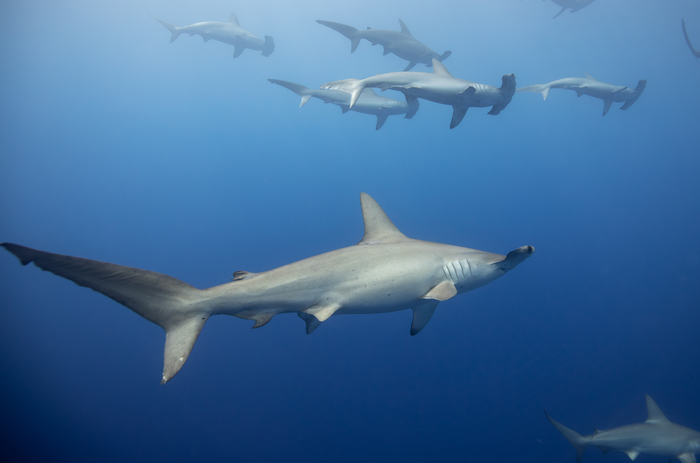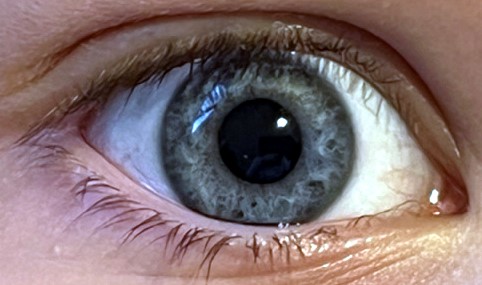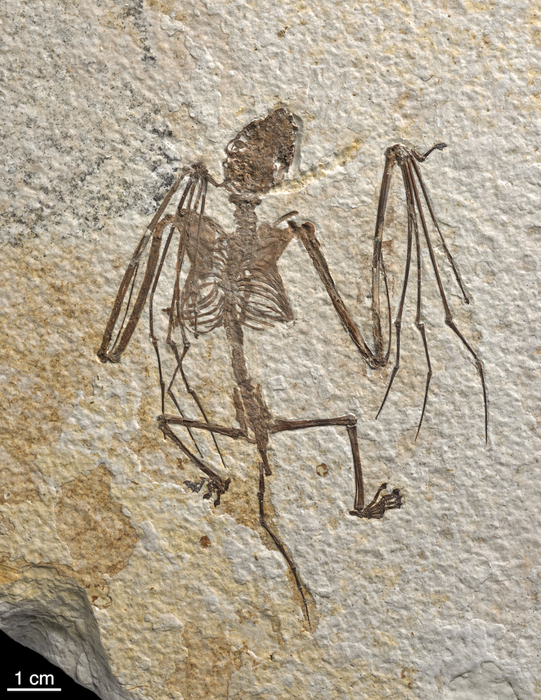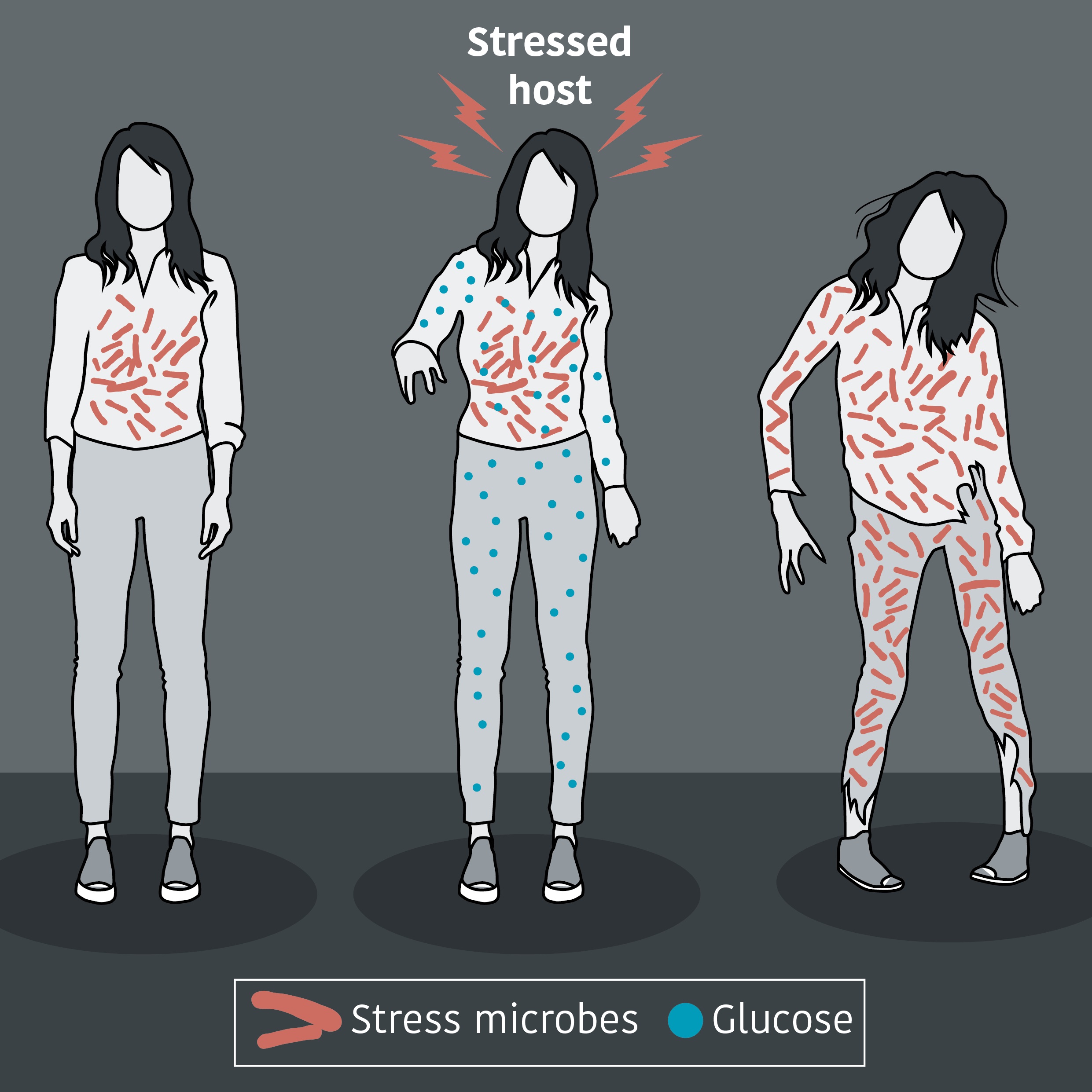The parachuting, venomous Joro spider was apparently spotted in a Boston, Massachusetts neighborhood, a reported sighting that may confirm these spiders appear to be moving north. …
Tag: Evolutionary Biology
Which Strains of Tuberculosis Are the Most Infectious?
Highly localized TB strains are less infectious in cosmopolitan cities and more likely to infect people from the geographic area that is the strain’s natural habitat.
Coastal ecosystems: cracking the code
UC Irvine associate professor of ecology & evolutionary biology studies how warmer ocean water is affecting marine ecosystems, particularly the alarming reality that climate change often favors invasive species over native ones. Cascade Sorte has spent her career unraveling the mysteries of Earth’s changing oceans.
UC Irvine’s Adriana Briscoe is elected to the National Academy of Sciences
Renowned evolutionary biologist Adriana Darielle Mejía Briscoe of the University of California, Irvine has been elected a member of the National Academy of Sciences. She joins a class of 144 scientists from around the world being recognized this year for their outstanding accomplishments in original research.
How organs of male and female mammals differ
The development of sex-specific characteristics is frequently seen in mammals. These characteristics stem from the activation of corresponding genetic programmes that until now have been largely undescribed by the scientific community.
How do caterpillars acquire chubby legs: NUS scientists trace the origins to an ancient genetic program associated with crabs
Adult insects, including butterflies and moths, typically have only three pairs of legs. But the existence of extra legs in caterpillars – chubby abdominal appendeages also known as ‘prolegs’ – has long posed an evolutionary mystery to biologists.
Long-term lizard study challenges the rules of evolutionary biology
James Stroud, assistant professor in the School of Biological Sciences at the Georgia Institute of Technology, measured natural selection in four Anolis lizard species in the wild for five consecutive time periods over three years.
Climatic changes put the brakes on spider romance
Scientists in South America and Australia have discovered that environmental stresses, such as large variations in rainfall and floods in the rivers, tend to change the mating rituals of these semi-aquatic Neotropical spiders which live in riparian habitats in Uruguay and Brazil.
Life on Earth didn’t arise as described in textbooks
No, oxygen didn’t catalyze the swift blossoming of Earth’s first multicellular organisms. The result defies a 70-year-old assumption about what caused an explosion of oceanic fauna hundreds of millions of years ago.
Artificial cells demonstrate that “life finds a way”
A study using a synthetic ‘minimal cell’ organism stripped down to the ‘bare essentials’ for life demonstrates the tenacity of organism’s power to evolve and adapt, even in the face of an unnatural genome that would seemingly provide little flexibility.
Butterfly beginnings
Biologists from Washington University in St. Louis collaborated with a large number of butterfly and plant specialists to reconstruct the origin and global spread of butterflies. Working with researchers from dozens of countries, Michael Landis and Mariana P. Braga in Arts & Sciences helped create the world’s largest butterfly tree of life, assembled with DNA from more than 2,000 species representing all butterfly families.

Hammerhead sharks hold their breath on deep water hunts to stay warm
Scalloped hammerhead sharks hold their breath to keep their bodies warm during deep dives into cold water where they hunt prey such as deep sea squids. This discovery, published today in Science by University of Hawai‘i at Mānoa researchers, provides important new insights into the physiology and ecology of a species that serves as an important link between the deep and shallow water habitats.
Tracking a New Path to Octopus and Squid Sensing Capabilities
Research led by UC San Diego and Harvard has traced the evolutionary adaptations of octopus and squid sensing capabilities. The researchers describe for the first time the structure of an octopus chemotactile receptor, which octopus arms use for taste-by-touch exploration of the seafloor.

Eye-opening Origin Story: Scientists Trace Key Innovation in Our Camera-like Vision to Bacteria
Scientists have traced the origin of a unique protein key to vertebrate’s camera-like vision back 500 million years. Their analysis of more than 900 genomes across the tree of life revealed that the protein came through horizontal gene transfer from foreign bacterial genes.

Oldest bat skeletons ever found described from Wyoming fossils
Scientists have described a new species of bat based on the oldest bat skeletons ever recovered. The study on the extinct bat, which lived in Wyoming about 52 million years ago, supports the idea that bats diversified rapidly on multiple continents during this time.

Babies or beauty?
A new study published in Science Advances has not only revealed that an ALHS in Colias butterflies has an ancient origin, but also determined the mechanisms contributing to its persistence over millions of generations.
New insights into chordate body plan development answer long-standing questions on evolution
Life began on earth more than 3.5 billion years ago, but the history of humans and other vertebrates accounts for only a fraction of this timescale.
Grassroots effort champions inclusive language in science
A new grassroots effort—announced this month in Trends in Ecology and Evolution—is calling for a reevaluation of some terminology used in ecology and evolutionary biology (EEB) to make it more inclusive and precise.
Probably not for sex
Male peacocks shake elaborate trains—a dazzling mating display—and male peacock spiders also dance, showing off brightly-colored abdomens.
Study reveals average age at conception for men versus women over past 250,000 years
Using a new method based upon comparing DNA mutation rates between parents and offspring, evolutionary biologists at Indiana University have for the first time revealed the average age of mothers versus fathers over the past 250,000 years, including the discovery that the age gap is shrinking, with women’s average age at conception increasing from 23.2 years to 26.4 years, on average, in the past 5,000 years.
Octopuses may link evolution of complex life to genetic ‘dark matter’
Octopuses have captured the attention of scientists and the public with their remarkable intelligence, including the use of tools, engaging in creative play and problem-solving, and even escaping from aquariums.
3D imaging of shark embryos reveals evolution of pelvic fins
Curtin University researchers have revealed how the pelvic fins of fish such as sharks and chimaeras have evolved from their sudden appearance in the fossil record over 410 million years ago.
Scandinavian wolves carry many harmful mutations
In a new scientific study, researchers at Uppsala University have shown that Scandinavian wolves carry around 100,000 harmful mutations in their genome.
Newly discovered scorpionfly genus with bizarre appearance
Zoologist Professor Rainer Willmann, former Director of the Zoological Museum at the University of Göttingen, has described and classified previously unknown species of scorpionflies from Nepal.
Genome studies uncover a new branch in fungal evolution
About 600 seemingly disparate fungi that never quite found a fit along the fungal family tree have been shown to have a common ancestor, according to a University of Alberta-led research team that used genome sequencing to give these peculiar creatures their own classification home.
30-million-year-old amphibious beaver fossil is oldest ever found
A new analysis of a beaver anklebone fossil found in Montana suggests the evolution of semi-aquatic beavers may have occurred at least 7 million years earlier than previously thought, and happened in North America rather than Eurasia.
New 3D model shows: Megalodon could eat prey the size of entire killer whales
The reconstructed megadolon (Otodus megalodon) was 16 meters long and weighed over 61 tons. It was estimated that it could swim at around 1.4 meters per second, require over 98,000 kilo calories every day and have stomach volume of almost 10,000 liters.
Did Gonorrhea Give Us Grandparents?
UC San Diego researchers tracked the evolution of a gene variant that supports cognitive health in older humans, but may have first emerged to protect against bacteria.
Evolve… Innovate… Repeat: Scientists Peel Back the Layers of Virus-Host Evolution and Innovation
Scientists have uncovered an intriguing new understanding of how viruses and the hosts they infect evolve new innovations to outcompete each other. Culminating a 10-year research effort, the researchers tracked the way fitness landscapes constantly change in the ongoing struggle for survival.
A new giant dinosaur gives insight into why many prehistoric meat-eaters had such tiny arms
An international team that includes a University of Minnesota Twin Cities researcher has discovered a new big, meat-eating dinosaur, dubbed Meraxes gigas, that provides clues about the evolution and anatomy of predatory dinosaurs such as the Carcharodontosaurus and Tyrannosaurus rex.
The Art of Getting DNA Out of Decades-Old Pickled Snakes
Two levels underground, Chicago’s Field Museum has a secret bunker.
Tiny Limbs and Long Bodies: Coordinating Lizard Locomotion
Using biological experiments, robot models, and a geometric theory of locomotion, researchers at the Georgia Institute of Technology investigated how and why intermediate lizard species, with their elongated bodies and short limbs, might use their bodies to move. They uncovered the existence of a previously unknown spectrum of body movements in lizards, revealing a continuum of locomotion dynamics between lizardlike and snakelike movements.
Sea dragons’ genes give clues to their distinctive looks
Even with plenty of fish in the sea, sea dragons stand out from the crowd. The funky, fabulous fish are bedecked with ruffly leaf-like adornments. Their spines are kinked. They’re missing their ribs and their teeth. And the responsibility of pregnancy is taken on by the males. By sequencing the genomes of two species of sea dragons, University of Oregon researchers have found genetic clues to the fish’s distinctive features: They’re missing a key group of genes found in other vertebrates. Those genes help direct the development of the face, teeth and appendages, as well as parts of the nervous system.
Great White Sharks May Have Contributed to Megalodon Extinction
Megatooth sharks like, Otodus megalodon, more commonly known as megalodon, lived between 23 and 3.6 million years ago in oceans around the globe and possibly reached as large as 20 metres in length.
Scientists See Signs of Traumatic Brain Injury in Headbutting Muskox
Scientists at the Icahn School of Medicine at Mount Sinai saw for the first time hallmarks of concussions and other head trauma in the brains of deceased headbutting animals—muskoxen and bighorn sheep. The results published in the journal Acta Neuropathologica may contradict the commonly-held belief that ramming animals do not suffer brain injuries and support the notion that studies on animals with brains evolutionarily similar to those of humans may help researchers understand and reduce traumatic brain injuries.
New insight into the possible origins of life
Researchers at the University of Tokyo have for the first time been able to create an RNA molecule that replicates, diversifies and develops complexity, following Darwinian evolution.
Genetic analysis uncovers shared evolutionary history of fish fins and vertebrate limbs
Scientists from UChicago and Spain use CRISPR to show how genes that control growth at the end of fish fins play the same role in fingers and toes.
FAU Receives NSF Grant to Explore Trait Evolution Across Species
The NSF grant will enable scientists to elucidate trait evolution across species using statistical and supervised machine learning approaches to vigorously and accurately predict general and specific evolutionary mechanisms that also will be applicable to various genomic and transcriptomic data for evolutionary discovery.
Evolutionary ‘time travel’ reveals enzyme’s origins, possible future designs
“The distinction between the past, present and future is only a stubbornly persistent illusion,” Albert Einstein wrote. Now, researchers have used evolutionary “time travel” to study how an enzyme has evolved, with implications for future design. They will present their results at ACS Fall 2021.
The future of personalized medicine is in unlocking the hidden mechanism that controls which genes are activated, researcher says
New research by McMaster University evolutionary biologist Rama Singh suggests there is a layer hidden in our cells that controls how genes interact, and how the many billions of possible combinations produce certain results.

Climate change is driving plant die-offs in Southern California, UCI study finds
Irvine, Calif., June 21, 2021 – A shift is happening in Southern California, and this time it has nothing to do with earthquakes. According to a new study by scientists at the University of California, Irvine, climate change is altering the number of plants populating the region’s deserts and mountains. Using data from the Landsat satellite mission and focusing on an area of nearly 5,000 square miles surrounding Anza-Borrego Desert State Park, the research team found that between 1984 and 2017, vegetation cover in desert ecosystems decreased overall by about 35 percent, with mountains seeing a 13 percent vegetation decline.
Tulane professor has the latest buzz on cicadas
When biologist Keith Clay came to Tulane University in July 2018, he brought with him an impressive knowledge of periodical cicadas, the noisy bug that has emerged by the billions in states east of the Mississippi after 17 years underground.…
Awaiting the W.H. UFO report: Kelly Smith explores the social/conceptual/ethical issues surrounding life in space
UFO’s may be evidence of aliens or not – we’ll have to see what the White House report says. Clemson philosopher and biologist Kelly Smith examines these issues and more. He is one of the leaders in the emerging community of scholars dedicated…
Morphogenesis: Geometry, Physics, and Biology – L. Mahadevan webcast
On Wednesday, May 5 at 7 pm ET, Perimeter Institute presents a special public talk by Harvard University’s L. Mahadevan, who will explain how the intersections of physics, biology, and mathematics are unveiling the amazing complexity of life.
New Approach Helps Determine How Much Microbial Community Composition Is Driven by Selection and How Much by Chance
Quantifying the relative importance of natural selection, migration, and random shifts to a species is a major challenge in ecology research, especially for microbes. This study develops an approach named iCAMP that is based on the concept that different processes can govern different groups of species in a diverse community. Applied to grassland microbial communities, iCAMP revealed that environmental changes altered the relative importance of the ecological processes.
New Blueprint of Brain Connections Reveals Extensive Reach of Central Regulator
In a new article published in Nature Communications, Moffitt Cancer Center researchers show how the location of the tumor and spatial constraints put on it by the surrounding tissue architecture impact genetic heterogeneity of tumors.

Scientists describe earliest primate fossils
A new study published Feb. 24 in the journal Royal Society Open Science documents the earliest-known fossil evidence of primates. These creatures lived less than 150,000 years after the Cretaceous-Paleogene mass extinction event that killed off non-avian dinosaurs and saw the rise of mammals.
Study: ‘Hidden’ genes could be key in development of new antibiotics
A study from the Center for Phage Technology, part of Texas A&M’s College of Agriculture and Life Sciences and Texas A&M AgriLife Research, shows how the “hidden” genes in bacteriophages — types of viruses that infect and destroy bacteria — may be key to the development of a new class of antibiotics for human health.

How and why microbes promote and protect against stress
The bacteria, yeast and viruses that make up the human microbiome affect physical health, behavior and emotions. Some microbes in the human microbiome prosper when the body is under stress, while other microbes contribute to buffering the body against stress. Evolutionary theory suggests reciprocal relationships between microbes in the human body and stress; these relationships can possibly be harnessed to promote physical and mental health.
Mud-slurping chinless ancestors had all the moves
A team of researchers, led by the University of Bristol, has revealed our most ancient ancestors were ecologically diverse, despite lacking jaws and paired fins.